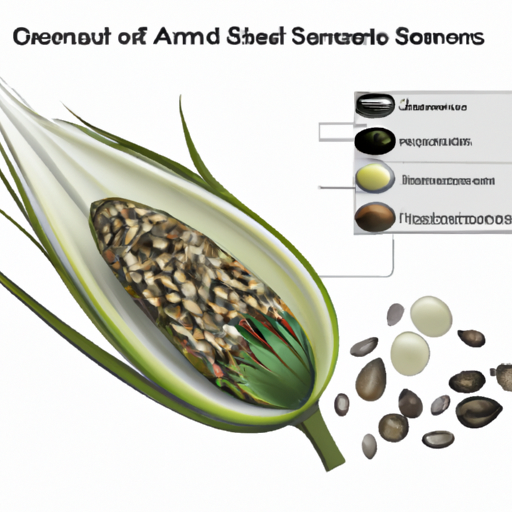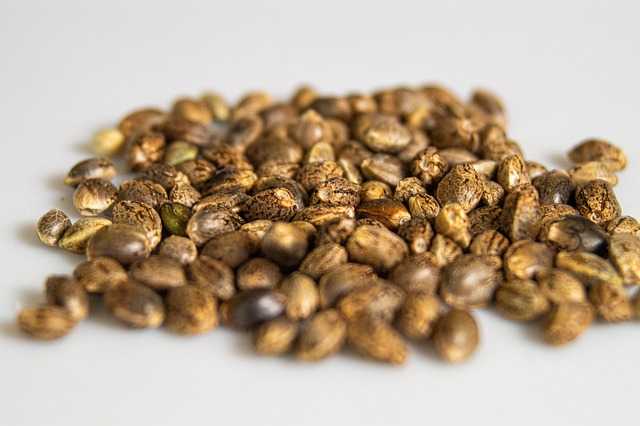This comprehensive guide is designed to assist indoor growers in mastering the art of germinating cannabis seeds. It provides a step-by-step approach to ensuring successful cannabis seed germination, covering everything from the right environmental conditions to the correct planting procedures.
Understanding the Importance of Cannabis Seed Germination: Why Bother?
Germinating cannabis seeds is a crucial step in the cultivation process for any indoor grower. It is the foundation upon which a successful cannabis garden is built. Proper germination ensures that your seeds have the best chance of developing into healthy, robust plants.
One of the key reasons for bothering with cannabis seed germination is the increased likelihood of successful plant growth. When seeds are germinated, they enter a state of active growth, allowing the roots to establish themselves and absorb nutrients from the soil. This process increases the chances of successful seedling development and ultimately leads to higher yields when it comes time to harvest.
Another important reason to focus on germination is the ability to select for desired traits. By germinating multiple seeds, you can observe and choose the strongest and healthiest seedlings to continue growing. This allows you to select for traits such as high potency, disease resistance, or specific flavors and aromas.
Furthermore, germinating cannabis seeds gives you control over the timing of your garden. By starting the germination process indoors, you can ensure that your plants are ready to be transplanted at the desired time, whether it be for a specific growing season or personal preference. This control over timing allows for a more efficient and organized cultivation cycle.
Additionally, germination is essential for ensuring genetic diversity in your cannabis garden. Each seed carries its own unique genetic makeup, and by germinating multiple seeds, you increase the chances of cultivating a diverse range of plants. This diversity not only adds visual interest to your garden but also provides a wider range of flavors, aromas, and effects to enjoy.

A diagram illustrating different parts of a cannabis seed
Choosing Your Seeds: Not All Cannabis Seeds Are Created Equal
When it comes to germinating cannabis seeds, it is important to understand that not all seeds are created equal. The quality and genetics of the seeds you choose will greatly impact the success of your cannabis cultivation.
One of the first factors to consider when choosing your seeds is the strain or variety. Each strain has its own unique characteristics, such as growth pattern, potency, flavor, and aroma. Take the time to research different strains and determine which ones align with your preferences and goals as a grower.
In addition to the strain, it is crucial to ensure that you are purchasing seeds from a reputable source. Reliable seed banks or breeders have a track record of producing high-quality seeds that are genetically stable. This guarantees that you are starting with seeds that have the potential to develop into healthy and productive plants.
Another important consideration is the germination rate of the seeds. Germination rate refers to the percentage of seeds that successfully sprout and develop into seedlings. Look for seeds with a high germination rate to maximize your chances of successful germination. This information can often be found on the packaging or provided by the seed bank.
Furthermore, consider the desired growing conditions for your cannabis plants. Some strains are better suited for indoor cultivation, while others thrive in outdoor environments. Take into account factors such as temperature, humidity, and light requirements when selecting your seeds. This will ensure that your chosen strains are compatible with your growing setup.
To Soak or Not to Soak? Pre-Germination Techniques
When it comes to pre-germination techniques for cannabis seeds, one common question that arises is whether or not to soak the seeds before planting. This practice involves submerging the seeds in water for a period of time to encourage germination. While soaking can be beneficial for some seeds, it is not always necessary or recommended for cannabis seeds.
Soaking cannabis seeds can help soften the outer shell, making it easier for the seedling to emerge. It can also jumpstart the germination process by hydrating the seeds and activating enzymes that promote growth. However, it is important to note that cannabis seeds are delicate and can easily be damaged if not handled with care.
If you choose to soak your cannabis seeds, it is crucial to follow the proper procedure. Start by filling a glass with room-temperature water and placing the seeds gently on the surface. Allow them to soak for about 12 to 24 hours, ensuring they are fully submerged. After soaking, carefully transfer the seeds to a damp paper towel or directly into the growing medium.
On the other hand, some growers prefer not to soak their cannabis seeds. They argue that soaking can increase the risk of overhydration, which can lead to seed rot or other issues. Instead, they opt for a more straightforward approach by directly planting the seeds into a moist growing medium.

An infographic demonstrating pre-germination techniques such as soaking and scarification
Creating the Perfect Environment for Germination: What Do Cannabis Seeds Need?
To ensure the successful germination of cannabis seeds, it is crucial to create the perfect environment that meets their specific needs. Firstly, cannabis seeds require a consistent temperature range of around 70-85°F (21-29°C) to stimulate germination. Fluctuations in temperature can hinder the process, so it is important to maintain a stable and warm environment for the seeds.
In addition to temperature, cannabis seeds also need moisture to germinate. The ideal moisture level is around 70% humidity. To achieve this, you can cover the germination container with a clear plastic dome or use a humidity dome to maintain the necessary moisture levels. Regularly check the moisture content of the growing medium and mist it with water if needed, ensuring it remains damp but not overly wet.
Another key factor for successful germination is providing adequate airflow. While moisture is essential, excessive humidity and lack of ventilation can lead to fungal growth or damping-off, which can be detrimental to the seeds. Ensure there is proper airflow in the germination area by using a small fan or by opening vents or windows if growing in an enclosed space.
Light is another consideration for cannabis seed germination. While seeds do not require intense light during this stage, they do benefit from a small amount of indirect light. Placing the germination container near a bright window or using a low-intensity grow light can provide the necessary light exposure.
Finally, it is important to maintain a clean and sterile environment for germination. Proper sanitation helps prevent the growth of pathogens or pests that can harm the delicate seeds. Use sterilized or clean containers, and ensure the growing medium is free from contaminants.
Planting Your Germinated Seeds: Do’s and Don’ts
Once your cannabis seeds have successfully germinated, it’s time to carefully plant them in their growing medium. Here are some do’s and don’ts to ensure a successful planting process and give your seedlings the best start:
1. Do handle the germinated seeds with care:
When transferring the germinated seeds from the germination container to their growing medium, be gentle to avoid damaging the delicate root and shoot structures. Use tweezers or a spoon to carefully lift and place the seeds into pre-prepared holes in the growing medium.
2. Don’t plant the seeds too deep:
It’s important to plant the germinated seeds at the right depth in the growing medium. Planting too deep can prevent the seedling from emerging properly while planting too shallow can expose the delicate roots. A general rule of thumb is to plant the seed about half an inch (1-2 cm) deep.
3. Do provide proper drainage:
Ensure that the growing medium has adequate drainage to prevent water logging, which can lead to root rot. Good drainage can be achieved by using a well-draining soil mix or adding perlite or vermiculite to the growing medium.
4. Don’t overwater the seedlings:
While it’s important to keep the growing medium moist, overwatering can suffocate the roots and lead to damping-off or other fungal diseases. Water the seedlings gently and only when the top inch of the growing medium feels dry.
5. Do provide a suitable light source:
Once the seeds are planted, they will need adequate light to continue their growth. Place the newly planted seeds under a low-intensity grow light or near a bright window to provide the necessary light for photosynthesis.

A step-by-step photo guide on how to plant germinated cannabis seeds
Troubleshooting Common Germination Problems: Why Aren’t My Seeds Germinating?
Insufficient moisture
One common reason for seeds not germinating is insufficient moisture. If the growing medium is too dry, the seeds may not be able to absorb enough water to trigger the germination process. To address this issue, make sure to keep the growing medium consistently moist, but not overly saturated. Consider misting the medium lightly with water to maintain the proper moisture level.
- Incorrect temperature
Temperature plays a crucial role in seed germination. If the environment is too cold, the seeds may remain dormant and fail to sprout. On the other hand, if it’s too hot, the heat can damage the seeds and hinder germination. Ensure that the temperature in the germination area is within the optimal range for cannabis seeds, typically around 70-85°F (21-29°C). Using a heating mat or adjusting the room temperature can help create the ideal conditions for germination. - Poor seed quality
Sometimes, the issue lies with the quality of the seeds themselves. Old or low-quality seeds may have a lower germination rate or fail to germinate altogether. To prevent this problem, always purchase seeds from reputable sources known for their high-quality genetics. Additionally, consider conducting a viability test before germination by placing a few seeds in a damp paper towel and checking for signs of sprouting within a few days.
From Germination to Growth: What’s Next After the Seed Sprouts?
Once your cannabis seeds have successfully germinated and sprouted, it’s time to shift your focus towards nurturing their growth. Here are the key steps to follow as your seedlings progress:
- Transplantation:
After the seedlings have developed their first set of true leaves, it’s time to transplant them into larger containers with nutrient-rich soil. Carefully remove the seedlings from their initial growing medium, taking care not to damage the delicate roots. Place each seedling into its new container and gently cover the roots with soil, ensuring they are adequately supported. - Light and Air Circulation:
Seedlings require ample light to promote healthy growth. Provide them with a light source that emits a full spectrum of wavelengths, such as fluorescent or LED grow lights. Hang the lights at an appropriate height to avoid burning the seedlings. Additionally, ensure good air circulation around the plants to prevent the development of mold or fungal diseases. - Nutrient Feeding:
As your seedlings grow, they will require nutrients to support their development. Start by using a mild, balanced fertilizer specifically formulated for seedlings. Gradually increase the strength of the nutrient solution as the plants mature. Be careful not to overfeed, as this can lead to nutrient burn and other complications. - Watering:
Proper watering is crucial for healthy seedling growth. Water the plants when the top inch of soil feels dry to the touch. Avoid overwatering, as this can lead to root rot and other issues. Allow the soil to dry out slightly between waterings to encourage the roots to seek moisture deeper in the container. - Monitoring and Adjusting:
Regularly monitor your seedlings for any signs of stress, pests, or nutrient deficiencies. Adjust growing conditions as needed, such as adjusting light height, temperature, and humidity levels. Keep a close eye on the overall health of the plants and address any issues promptly to ensure optimal growth.

Image sequence showing the transition from germinated seed to seedling
Germinating Cannabis Seeds – A Step-by-Step Guide for Indoor Growers:
| Step | Instructions | Time | Equipment |
|---|---|---|---|
| Soaking | Soak the seeds in water overnight. | 8-12 hours | Bowl of water |
| Planting | Plant the soaked seeds in soil. | 5 minutes | Soil, pot, tray |
| Watering | Spray the soil with water to keep it moist. | Every 2-3 days | Spray bottle |
| Lighting | Ensure the surface of the soil is exposed to 18 hours of light and 6 hours of darkness. | 18 hours of light, 6 hours of darkness | Grow lamp |
Successful germination is critical for a healthy cannabis plant. With the right knowledge, patience, and care, even beginners can successfully germinate cannabis seeds. Remember, the key is to create the ideal conditions and to handle the seeds gently. Once you master the germination process, you’re well on your way to a flourishing indoor cannabis garden.





